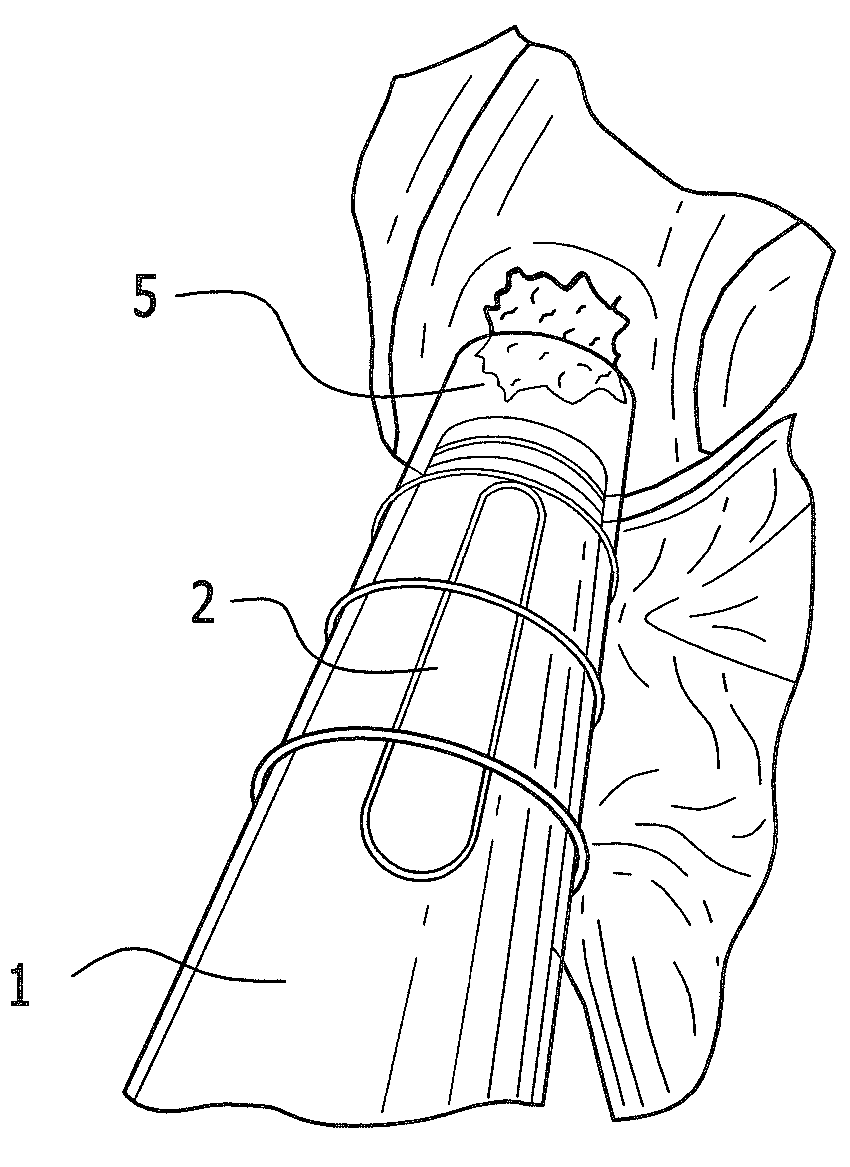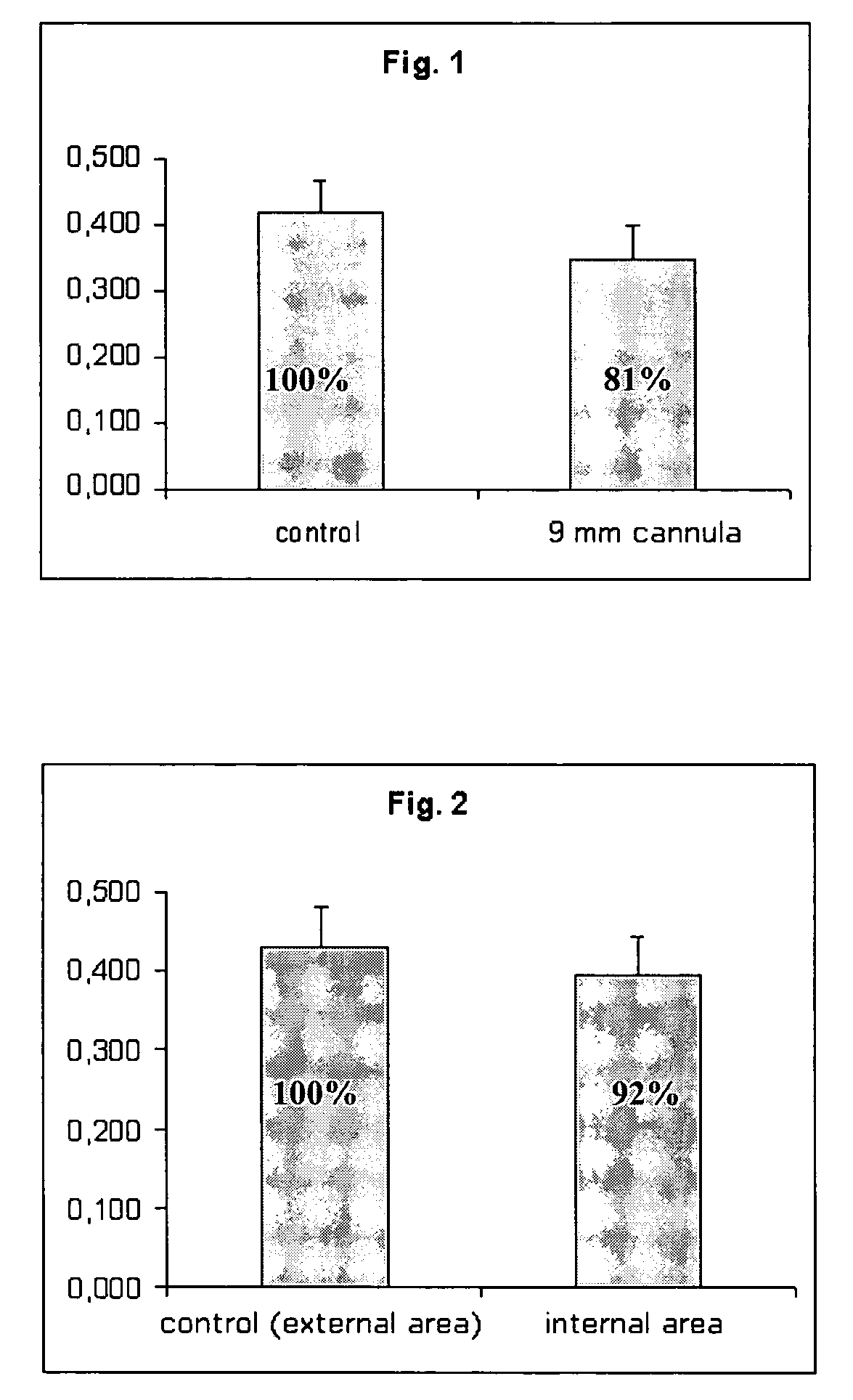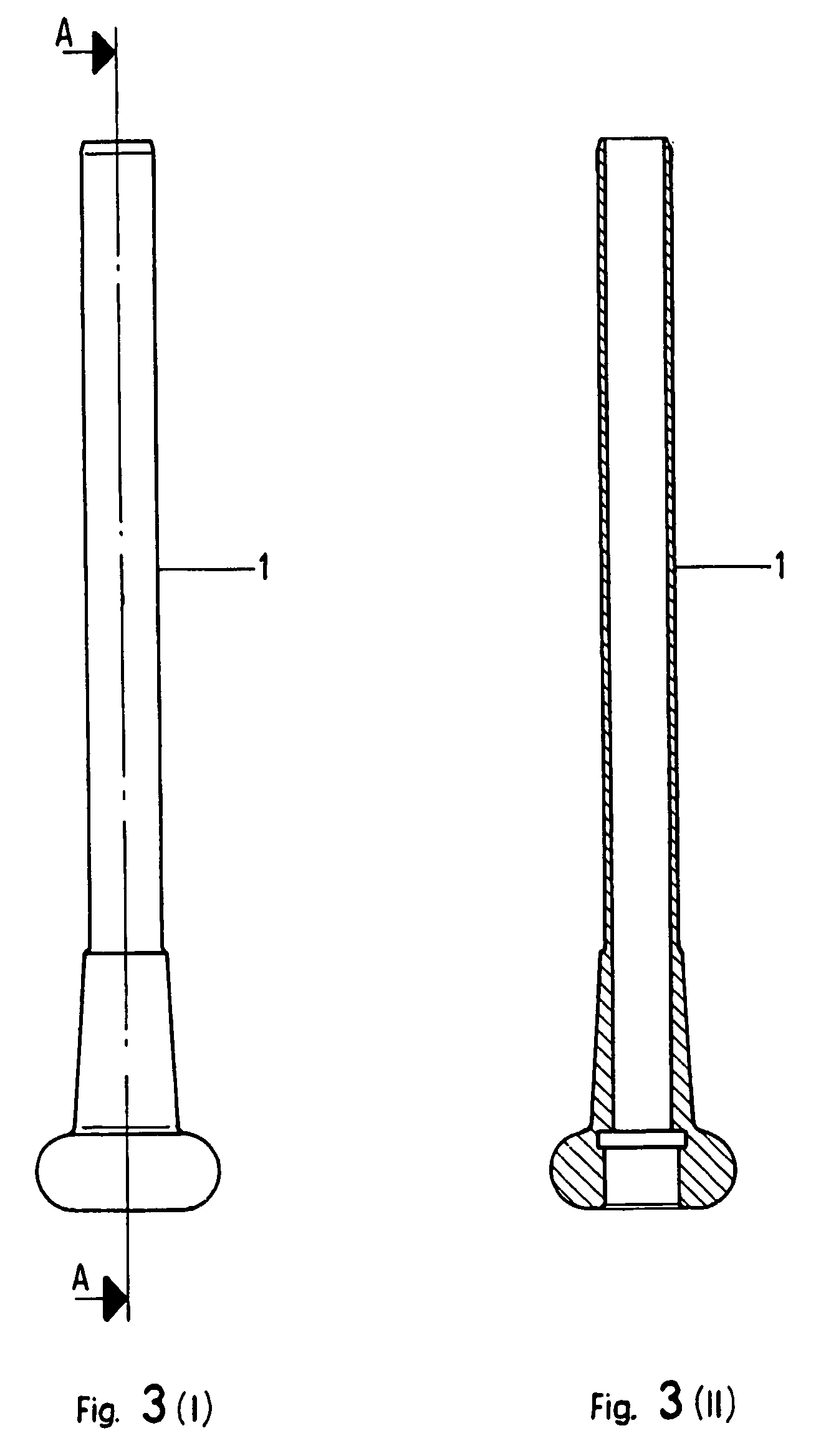Use of a biological material containing three-dimensional scaffolds of hyaluronic acid derivatives for the preparation of implants in arthroscopy and kit for instruments for implanting said biological material by arthroscopy
- Summary
- Abstract
- Description
- Claims
- Application Information
AI Technical Summary
Benefits of technology
Problems solved by technology
Method used
Image
Examples
example 1
Preparation of the Biological Material
[0077]The cell culture process is described in Brun et al., “Chondrocyte aggregation and reorganisation into three dimensional scaffolds”, J. Biomed. Mater. Res. 1998, 46, 337-346. Cartilage tissue taken from a non-weight-bearing area marginal to the lesion is detached by treatment with type-II collagenase, and the cells thus obtained are seeded in dishes containing HAM's F12 medium supplemented with foetal calf serum, 1% streptomycin-penicillin, 1% glutamine and with the following trophic factors, each of which in a quantity ranging between 1 and 10 ng / ml: TGF β1, recombinant human EGF, recombinant human insulin and recombinant human bFGF.
[0078]The cells are grown in vitro from one to four serial passages, then seeded on HYALOGRAFT®C (a non-woven fabric based on HYAFF®11t—total benzyl ester of hyaluronic acid), at a cell density of between 0.5×106 and 4×106 cells / cm2, and the culture medium described above. At each change of medium (2-10 ml eve...
example 2
Valuation of Cell Viability by the MTT Test
[0079]Cell viability of the biological material is determined by incorporation of the vital MTT dye (F. Dezinot, R. Lang “Rapid calorimetric assay for cell growth and is survival. Modification to the tetrazolium dye procedure giving improved sensitivity and reliability” J. Immunol. Methods, 1986, 22 (89), 271-277). A solution prepared by dissolving 0.5 mg / ml of MTT in phosphate buffer, pH 7.2 (PBS) is added to the test material and placed in an incubator set at 37° C. for 4 hours. Once incubation is complete, the MTT solution is aspirated, the material washed several times with PBS, after which 5 ml of extracting solution constituted by 10% dimethylsulphoxide in isopropyl alcohol is added. After centrifugation, the absorbance of the supernatant is determined by a spectrophotometric reading at 470 nm.
example 3
Verification of Cell Viability Recovery After Passage Through a Cannula
[0080]The MTT test as described in Example 2 is used to verify cell viability recovery after passage through a cannula, an instrument commonly used in arthroscopy and used here to place the biological material.
[0081]The results are reported in FIG. 1, which shows cell viability recovery relative to a bio-engineered cartilage construction (Hyalograft®C, dimensions 2×2 cm), prepared as described in Example 1. After 72 hours in its packaging, that is, in conditions of maximum metabolic stress, the biomaterial was gently extruded through a cannula with a diameter of 9 mm. It was found that the passage through the hollow of the cannula does not modify the cell viability of the present material.
PUM
| Property | Measurement | Unit |
|---|---|---|
| Time | aaaaa | aaaaa |
| Cell viability | aaaaa | aaaaa |
Abstract
Description
Claims
Application Information
 Login to View More
Login to View More - R&D Engineer
- R&D Manager
- IP Professional
- Industry Leading Data Capabilities
- Powerful AI technology
- Patent DNA Extraction
Browse by: Latest US Patents, China's latest patents, Technical Efficacy Thesaurus, Application Domain, Technology Topic, Popular Technical Reports.
© 2024 PatSnap. All rights reserved.Legal|Privacy policy|Modern Slavery Act Transparency Statement|Sitemap|About US| Contact US: help@patsnap.com










